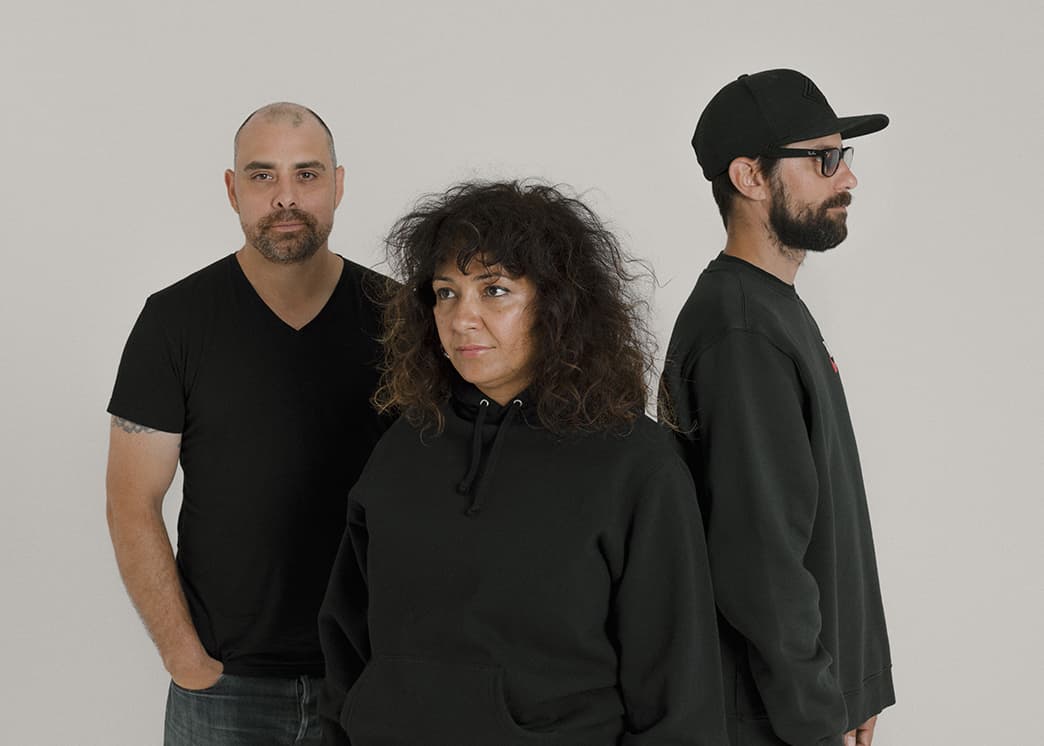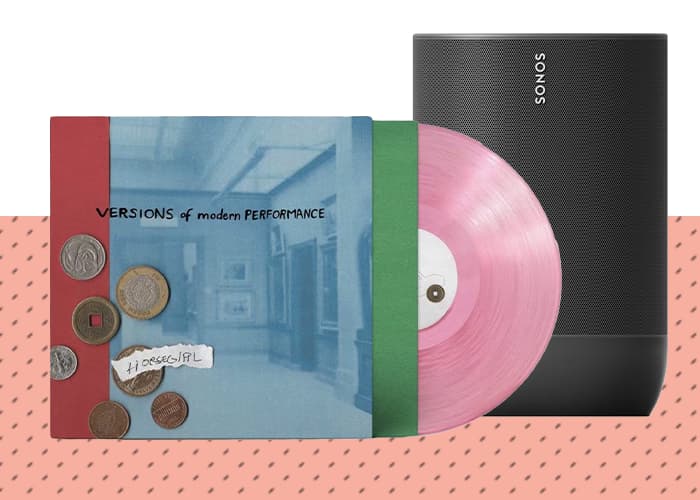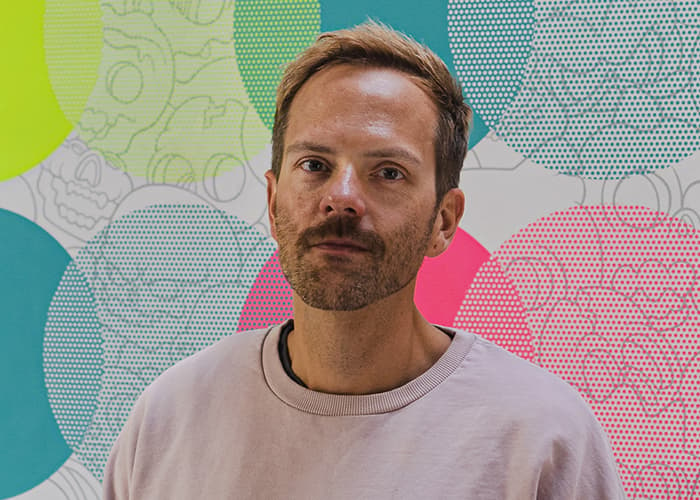
1xRUN is a powerful, connected, global art company located in Detroit. For almost a decade, Roula David, Jesse Cory, Dan Armand, and their staff have been curating, producing, and releasing limited edition art prints every weekday. That’s right, Monday all the way through Friday.
We recently sat down with 1xRUN’s brain trust to talk about art, Detroit, secondary markets, and how they’re able to do what they do. As you’ll see, it all boils down to one thing: no bullshit. This is what 1xRUN is all about.
The following interview has been edited for length and clarity.
StockX: Thank you all for sitting down with us. Could you please introduce yourselves?
Dan Armand (DA): I’m Dan Armand, the creative director, and co-founder.
Roula David (RD): Roula David, the chief operating officer and head of special projects for 1xRUN.
Jesse Cory (JC): Jesse Cory, I’m the CEO and co-founder.
How did the three of you end up in Detroit and meeting each other?
DA: I’m from Detroit. I guess I’m probably a fourth or fifth-generation Detroiter.
So you have serious roots in Detroit.
DA: Yeah, my great grandmother came here in the early 1900s and lived on the east side. She worked at Hudson’s and retired from there. I grew up on the east side, moved to Harper Woods, and ended up going to school at CCS [College for Creative Studies].
JC: Dan and I met when we were both working for an agency out of the 1001 Woodward building. We were making a documentary about graffiti and Dan was a graffiti writer and the subject of the film. He needed an internship and asked if he could do the internship at the agency. Shortly after that, Dan was hired fulltime, and we worked there together for a couple of years. We both left the agency and didn’t reconnect till 2007 when we opened up a small boutique, 323-East.
DA: [323-East] was just an end-of-the-day kind of set up. We screen printed t-shirts and worked with friends of ours and we sold handmade jewelry and original art; at that time we also started doing festivals and street fairs.
JC: We were doing technology for our day job; we had clients for whom we would make websites and marketing videos and stuff like that. Then we opened up an art boutique, it turned into a gallery, and then one day it turned into more of a white wall, fine art gallery. It was at this point that we started giving away prints to people that came to our art shows.

Why did you two decide to give away prints?
JC: We figured we could get people lined up. We thought, “[Handing out prints] is fun, getting people lined up, now how do we collect their email addresses?” So you came to our show, you lined up, you gave us your email address, and then you got a print.
And this leads you all to start selling prints?
JC: One day, we were trying to buy an art print from somebody and it was a terrible experience. We said, “How can we engineer a better online experience for the selling and collecting of art prints?” So we said, “Why don’t we engineer this in a way to buy prints where we’ll make prints based on the size of the market?” And that was where we came up with the idea of 1xRUN. I said, “Look, Dan, we’re already making prints for our exhibitions, and we think people will buy them too. Why don’t we build a better website that will help create market demand?”
DA: It was our way of trying to engineer a little bit of that supply and demand because, just starting, we didn’t have the caliber of artists to sell out every print we released. So we thought if we can limit the time and limit the quantity, even your entry-level emerging artists would be able to release and sell out prints.

Roula, when do you get in the mix?
RD: I met these guys in 2011. I moved here from Cincinnati, Ohio, to take a job with Red Bull. I was the marketing manager for Red Bull for the state. And I did all of their sports and culture marketing as well as like their “Out of Home” campaign. So I built out and created the program and did Red Bull House of Art. Dan and Jesse both have another partner, Ryan Brogan, that lives in New York. And I’ve known Ryan for a long time. He’s the only person I knew from Detroit, so I asked if he could introduce me to people here.
So I met Jesse and Dan when they were doing a project on Woodward called “Woodward Windows.” Back then, in 2011, there were all of these abandoned buildings, and Jesse and Dan were doing art installations in the windows. Jesse and I started dating, I started doing a lot of production for them, but I continued to work for Red Bull for another three years. Eventually, Jesse and Dan asked me to leave my job and come work with them.
We moved 1xRUN in 2012 to Eastern Market [in Detroit] into a building Jesse and Dan had purchased on Gratiot, and Jesse and I got married, and we opened a new gallery, Inner State Gallery. Jesse and I lived on the third floor, 1xRUN’s offices on the second, and gallery space on the first floor. We also had an artist-in-residence loft on the third floor and a full-blown studio in the basement. We had this fully functioning art complex right there on the same block as Trinosophes and right across from Gratiot Central.
Were you always doing an artist-in-residency program, or was that something that started once you moved into Eastern Market?
RD: Since like 2012
JC: I had a loft in E & B [Brewery Lofts in Detroit] above Red Bull House of Art for artists to live when they came to town to do projects with us.
RD: I was doing stuff at Red Bull [House of Art] that was considered an artist-in-residence. These guys [Jesse and Dan] were doing theirs, but they were doing it with artists coming from out of town. All of our artists were local; they didn’t live [at Red Bull]; they just came and worked there. But I built a great network of local artists from that program. So when I became a part of Interstate, I realized that it was time to spend more time telling a Detroit story as a Detroit gallery. We started taking Detroit artists to other cities. We did full-blown shows in San Francisco and New York. But the gallery doesn’t make money. No matter if we sold a lot of art, it was never really profitable for us.
We had this fully functioning art complex right there on the same block as Trinosophes and right across from Gratiot Central.
Is this economic situation the reality for most galleries and retail?
RD: For Detroit art galleries and retail, yes, it’s challenging.
DA: The level of art we were selling, and emerging artists, it was a lot harder than if we were selling a single piece for $50,000. There’s a lot more upside in selling one of those.
RD: We had to sell a lot of small pieces.
DA: Yeah, we’d have to sell like a hundred pieces [to equal a single big sale].

You’d need the collector base, as well.
RD: So, on the online side, we had a great collector base; on the retail, walking in the gallery side, we didn’t necessarily. But we had a great email list.
DA: And then we started curating our local shows based on taking more risks, and bringing artists out for our residency based on what our whole collector base was interested in, not just the local collectors.
You also do a lot of work for big companies and brands. What’s the process like working for big brands versus curating a gallery and talking with collectors?
RD: Brands and large companies have a very clear vision of what they want. We’re curating and executing for them. Some companies, for example, will want to use local talent. They’ll say: “we’re opening an office in Berlin, suggest six artists.” We’ll put a list together.
JC: 1xRUN has relationships with artists in cities all over the world. You could throw a dart at the map, and we’ve got a business relationship where we’ve released a print together or have met at an industry event.
Ok, you guys are global. Do you ever think you will need to relocate to a major coastal city?
JC: That’s the problem. No one even knew we were in Detroit. Everyone thought we were coastal because that’s where most of our collectors are located. And then everyone started telling this Detroit story and we thought, “Should we do it?” So we started [Murals in the Market], a mural festival. So the mural festival became a really great way to localize our brand without us saying, “Made in Detroit.”
We’ve talked about a lot of things you used to do. What, exactly, does 1xRun do?
JC: We’re publishing 300 to 500 editions a year. We release a new print or collection of artwork every single weekday. Sometimes we release 50 unique items or 50 editions of an image on a single day.
That’s incredible. How did you come up with this model of production?
JC: We used to just [release new prints] Mondays at noon. We did that for like 60 Mondays in a row.
DA: They’d sell out, and we’re sitting at our desks for the next six days, thinking we should be selling something else. That was great; we sold the one print out, but there are other days we could be doing this. So we started increasing the frequency [of drops] and networking and taking other opportunities, and that’s when we cultivated an abundance of artists that we worked with and started plugging into that network.
So the mural festival became a really great way to localize our brand without us saying, “Made in Detroit.”
Tell me about your core customers. How do they collect?
RD: About half of the art that we ship to people never gets hung. They’re collecting art, like sneaker collectors. Sneaker collectors will never put it on their feet. They’ll have stacks of boxes; they’ll buy, sell, and trade. That’s what a lot of our collectors and customers do.

That’s a perfect segue, going from sneakers to art, to the secondary market. How much has the 1xRun model impacted the secondary market for art?
RD: We encourage it. If you’re the first 50 to buy it, the price immediately changes after that 50 is made because it will never be made again. We really motivate the secondary market. A lot of our people flip our prints, and they flip on eBay.
DA: From the very beginning, that’s always been a part of what we would do. So we would think about how do we get our stuff out there [on the secondary market]. We started our own secondary market sales on our site, where we call it an “Archive Sale.”
With Murals in the Market and 1xRun, you’ve carved a unique and successful lane for yourselves. Looking ahead, what does success look like for you? How will you know when you’ve “made it?”
JC: Success is how many lives we’ve touched. We can measure our success by how many people benefit from our collaboration. So we’re talking about $5 million in artists’ commissions in the last nine years; that’s real money; that’s bridges between shows, bridges between commission projects.
RD: Sometimes, to me, what gauges our success are the projects that we can do where we know we’re not going to make money. We’re good enough that we could do this. That’s awesome that we can do passion projects.
DA: We’ve been able to support our staff and help a lot of them go from working for a company to becoming solo artists. That, to me, defines success.























